‘Killers of the Flower Moon’ Costume Designer Tells the Stories Behind the Clothes
Without question, costume designer Jacqueline West’s biggest challenge on Martin Scorsese’s “Killers of the Flower Moon” was making sure that the Osage community felt authentically represented onscreen. So when Chief Standing Bear recommended that West bring on Osage designer Julie O’Keefe as wardrobe consultant, she was grateful.
“Chief Standing Bear was so committed to us getting it right for this project,” the five-time Oscar nominee, whose credits include “Dune” and “The Revenant,” told TheWrap. “And it was really wonderful because I think it gave Marty the confidence that we would accurately portray and get all the nuances of every outfit. I have dressed many different nations, but I have never dressed the Osage before. Most of the tribes used similar materials, but the Osage completely made them their own. Not only did Julie understand the nuances, but she knew all the best craftsmen, the best fingerweavers, ribbon workers, beadmakers, silversmiths, et cetera. It was really amazing having her wealth of knowledge.”
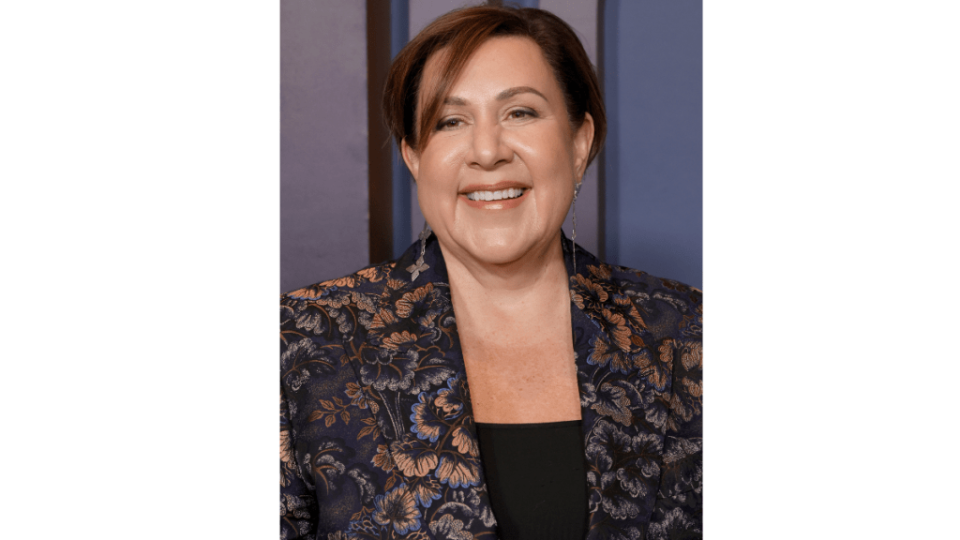
West dove deep into researching Osage culture, drawing on the 2,000 archival photographs that she found at the Carnegie Library in Deadwood, South Dakota where, she said, she studied “many family photos from the time, with everybody often dressed in couture.” This gave her a jumping off point for female characters like Anna Brown (Cara Jade Myers) and Reta Smith (Janae Collins), who embrace a more modern, 1920s flapper style compared to the traditional clothing of their sister Mollie Burkhart (Lily Gladstone).
“These were young girls who wanted to have all the latest fashions,” she said. “The other sisters all had different levels of traditional pieces as opposed to Mollie, who is strictly traditional.”
Here, West explained the details of some of the film’s most memorable outfits.
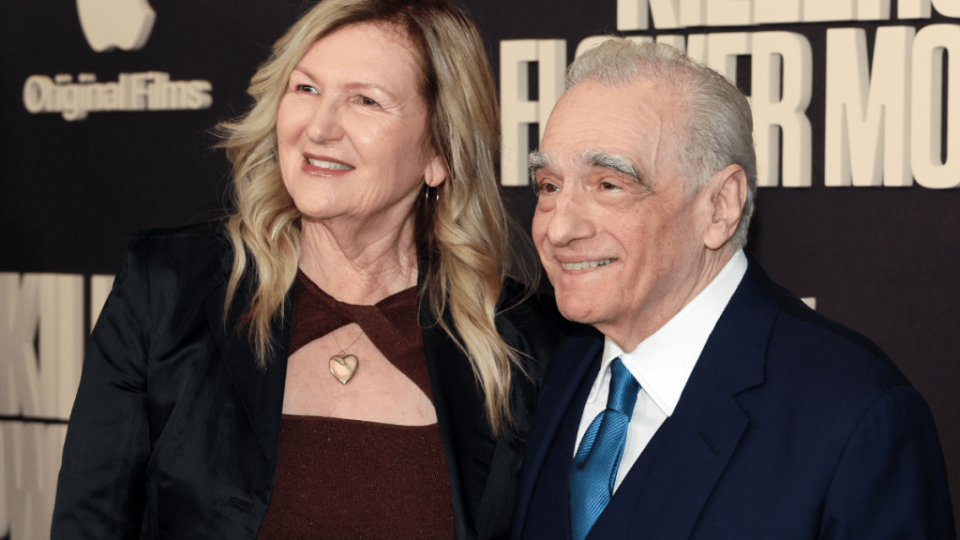
Mollie’s wedding party
In this photo (top of post), Mollie (center) stands with her family following her wedding to Ernest Burkhart (Leonardo DiCaprio). She and her sisters each wear the type of military-style coat that became popular as wedding garb after Thomas Jefferson gave an Osage chief one of his officer’s coats, which the chief then gave to his daughter.
“We reproduced them,” West said. “We researched all different types of wedding coats at the time and made each sister a unique coat that was just hers.”
She added: “We used all Osage artisans. Julie O’Keefe showed me samples of everyone’s work and we hand-picked them to match the sisters’ different personalities.”
The women also hold top hats decorated with feathers and bands handmade by Osage silversmith Kugee Supernaw in Tulsa. Under her coat, Mollie wears a wool blanket decorated with French moiré ribbon in traditional Osage colors and a hand that symbolizes friendship. All the blankets were made by Osage artisans from the 100-year-old company Pendleton Woolen Mills.
“The blankets worn are very special,” West said. “The art of the ribbon work was passed down from generation to generation. The floral blanket that Anna wears showcases the woodland-inspired embroidery with beads. All the blankets were tied and worn at the waist like a skirt, along with leggings.”
At the far left, Mollie’s mother, Lizzie Q (played by Tantoo Cardinal), differentiates herself from the rest of the wedding party by not sporting a military coat. “Just like in modern day, the mother of the bride wouldn’t wear white or a bridesmaid dress,” West said. “She must stand out and differentiate herself.”
A dark day in court
As she sits in the courtroom listening to how her family and community were murdered by white settlers, Mollie’s color palette is much more subdued than the vibrant primary colors she wears in the first half of the film. The bead choker around her neck is a status symbol, similar to pearls. “They were inspired by Czechoslovakians, who were famous for their glass beadwork,” West said.
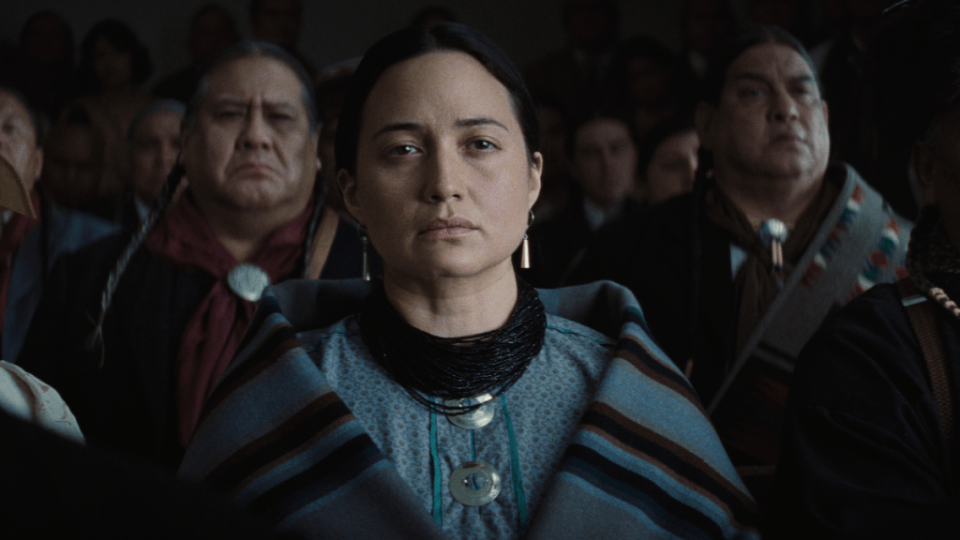
Gathering in the roundhouse
“The Osage men had a definite Western style, with calico shirts enhanced with French ribbons,” West said. “They wore a scarf around their neck — not a necktie — to differentiate themselves from their guardians and to show their status. They wore high-waisted moleskin pants with a buckle back and cowboy boots with a Spanish heel.”
Status was also indicated by the sawtooth pattern along the edge of some men’s blankets — which were worn differently than women, sometimes draped over one arm, sometimes over both shoulders.
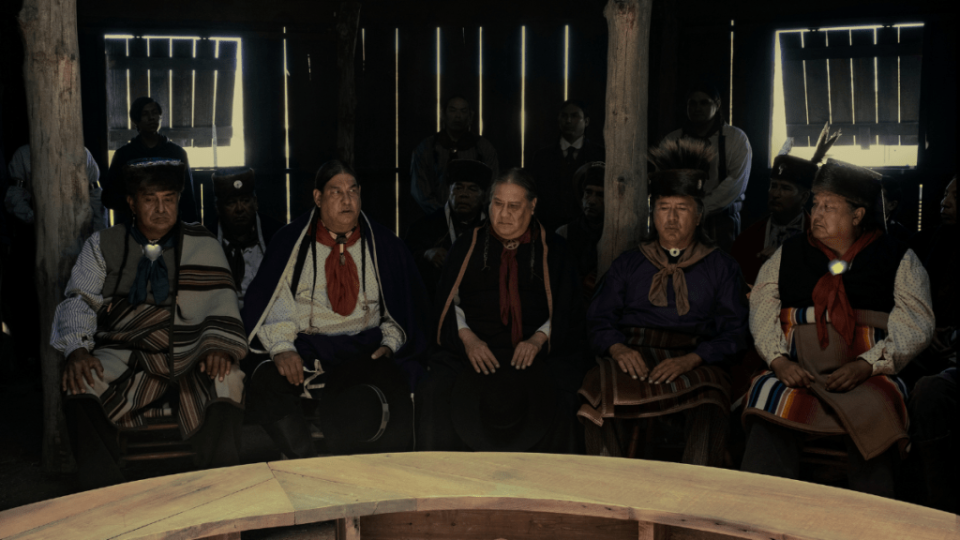
Meeting the FBI
The difference is subtle, but the men are dressed more formally here for their meeting in town with FBI agent Tom White (Jesse Plemons), while still conveying the strength of their tribe and each member’s individuality. In the foreground, Chief Bonnicastle (Yancey Red Corn) and Paul Red Eagle (Everett Waller) wear “their clothes like armor,” West said. “Similar to how the military coats showed power, these men stick to traditional Osage culture to showcase their power.”
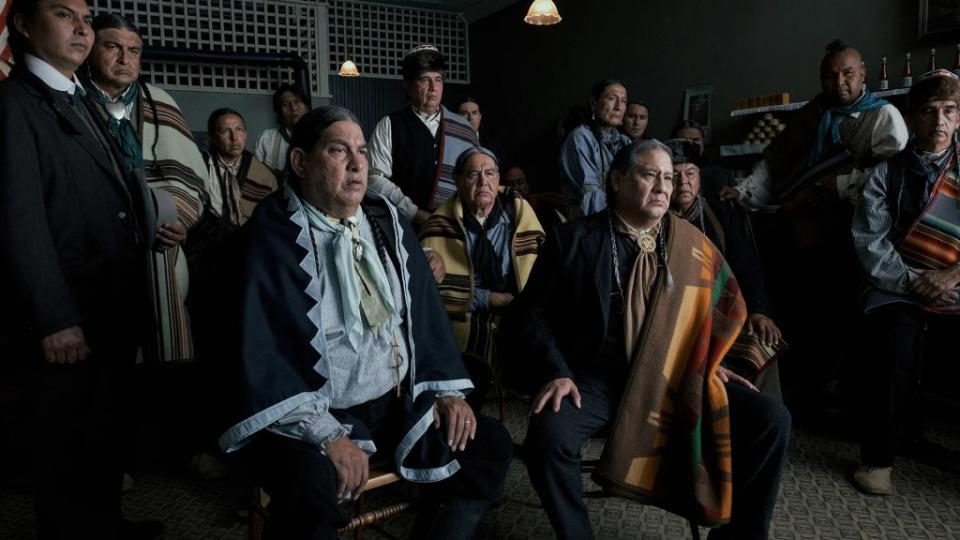
A version of this story first appeared in the Down to the Wire issue of TheWrap’s awards magazine. Read more from that issue here.
The post ‘Killers of the Flower Moon’ Costume Designer Tells the Stories Behind the Clothes appeared first on TheWrap.

